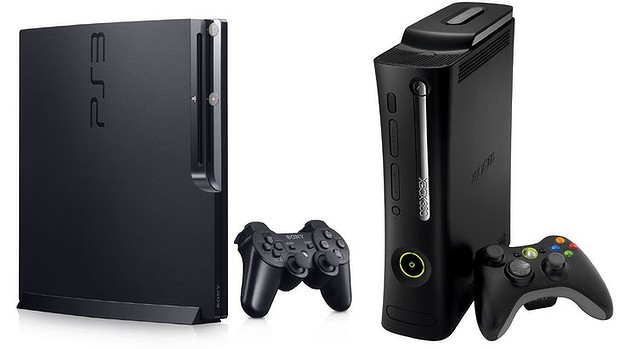While the excitement and media attention has been focused on the next-gen consoles for the last six months, a crisis has been developing. Software sales for the PS3 and the Xbox 360 have been losing steam across the board for publishers. The arrival of Grand Theft Auto V and holiday releases masked the symptoms somewhat, but the numbers are clear enough. We’ve heard EA and Activision and Ubisoft say that current-gen sales haven’t met expectations over the last two quarters.
The usual course of events in the console business has been for older consoles to see prices reduced while new consoles move in at the high end. This entire console cycle, however, has been lengthened well beyond the usual five years to more than seven. As part of this stretch, and perhaps because the last console generation started out at fairly high prices, price reductions have been slow to arrive.
We did see a number of bundles over the holidays for the PS3 and the Xbox 360, but the focus seemed to be more about adding software than reducing the overall price. Generally $249 seems to be best pricing for an Xbox 360 or a PS3 with a hard drive (the flash-memory only versions can be found for $199), and there are still bundles at $299 and even $349. When the PS4 can be had for $399 and the Xbox One for $449, it’s no surprise that sales of older hardware haven’t been great.
Publishers have been pushing for price reductions on the Xbox 360 and the PS3, but Microsoft and Sony haven’t listened so far. Certainly there’s a reluctance to lower prices and give up profits for as long as possible, but the trend lines should have been clear enough by now. The larger consideration was probably the desire to make sure the next-gen consoles got off to a good start by pushing hardware purchasers toward them. Johnny or Janey wants a game console Well, this older one is $299, but for $399 or $449 we can get the latest on everybody is talking about. This logic drives the desire to keep current-gen console prices high.
However, the last few months of next-gen sales have demonstrated that there’s momentum for these new high-priced consoles. (Maybe not as much for Microsoft as the company would like, but that’s a separate issue.) As we get closer to the holidays, and more highly anticipated next-gen titles come out, sales should remain strong. Lower-priced current-gen consoles shouldn’t affect that, but can hopefully be used to expand the market.
Microsoft and Sony can’t afford to be leisurely about reducing prices on the Xbox 360 and the PS3. In previous console cycles, the competition came only from the Big Three console makers. Their pricing closely tracked each other. The competitive picture is rapidly changing, though.

The $99 console threat has already arrived in the form of the Amazon FireTV. Yes, it’s not going to appeal to people who already have consoles, but that’s not who it’s aimed at. Think of people who haven’t wanted to drop $300 on a console and $60 each for games. The FireTV offers gaming for $99 (OK, $139 with the controller) and games that are free or only a few dollars. This device is likely to be joined before the holidays by an Apple TV with games, and a Google Android TV box with games, in that same price range. Even Roku offers some games, and is likely to expand that list.
These are not undercapitalized competitors we’re talking about, either. Apple, Google and Amazon have huge clout, mountains of cash, and content ecosystems already up and well-populated with games and developers. When they get serious about $99 gaming boxes, they will be a formidable threat. The next-gen consoles will have a significant technical advancement to keep them selling, but already Amazon FireTV games look pretty much like Xbox 360 or PS3 games to a casual observer (which is the definition of the likely buyers in this price range). The Xbox 360 and the PS3 risk get squeezed out of the market.
The answer is simple: Drop the price of the Xbox 360 and the PS3. Put the digital memory versions at $99 or $129, and the 250GB hard drive versions at $199. Bundle in some games, too, to make it compelling and demonstrate the fun right away. Prepare a marketing campaign worthy of these devices, and one big enough to get into a slugging match with Amazon, Apple and Google.
If Sony and Microsoft are going to do something like this, E3 is the perfect time to announce it. Sure, they could wait until later in the summer, but major retail chains will be setting out their buying strategies based on what they see and hear at E3. If the PS3 and Xbox 360 don’t look competitive for the holidays, you won’t see a lot of shelf space allocated to them. It’s always harder to get retail attention the later it gets towards the holidays, so last-minute pushes by Sony or Microsoft will be less effective.
Winter is coming, and the $99 wildlings will try to come over the wall. Will the warring console houses be able to meet the threat from an unexpected direction This will be one of the things to watch at E3.

